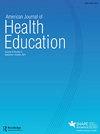A Systematic Review of Common Drunkorexia Measures: Examining Gender Differences across Scales
IF 0.8
Q4 PUBLIC, ENVIRONMENTAL & OCCUPATIONAL HEALTH
引用次数: 1
Abstract
ABSTRCT Background Drunkorexia includes calorie restriction, excessive exercise, and/or purging in combination with alcohol consumption. Exploring drunkorexia by gender could inform potential intervention to address varying rates of drunkorexia, blood alcohol concentrations, and alcohol-related consequences. Purpose The purpose of this systematic review is to examine potential gender differences in drunkorexia among college students. Methods Search engines were used to find studies utilizing college students (2012–2021) and drunkorexia measures, resulting in 22 studies. Results Weighted mean scores and independent-sample t-tests of subscales for both the Compensatory Eating and Behaviors in Response to Alcohol Consumption Scale (CEBRACS) and Drunkorexia Motives and Behaviors Scale (DMBS) showed no significant differences between females and males. Discussion The lack of difference indicates the need to consider diet, purging, and exercise as separate drunkorexia control techniques as opposed to one drunkorexia construct and indicates trends by gender may have evolved over the last decade. Translation to Health Education Practice Understanding the unique direct and secondhand health effects of drunkorexia by gender might assist in counteracting negative alcohol consequences potentially exacerbated by drunkorexia (e.g., overdose, injuries, death), and inform multiple CHES® and MCHES® areas of responsibilities and competencies to improve interventions to reduce risky alcohol consumption among college students.常见Drunkorexia测量方法的系统评价:跨量表的性别差异
背景:醉酒包括热量限制、过度运动和/或与饮酒相结合的排泻。按性别探讨醉酒可以告知潜在的干预措施,以解决不同的醉酒率、血液酒精浓度和酒精相关后果。目的本系统综述的目的是探讨大学生醉酒的潜在性别差异。方法利用搜索引擎检索以大学生(2012-2021年)为研究对象和醉酒措施的研究,共22项。结果代偿性饮食与酒精消费行为量表(CEBRACS)和醉酒动机与行为量表(DMBS)的加权平均得分和独立样本t检验显示,男女之间无显著差异。缺乏差异表明需要考虑饮食,排便和运动作为单独的醉酒控制技术,而不是一个醉酒结构,并表明性别趋势可能在过去十年中发生了变化。了解不同性别的醉酒对健康的直接和间接影响可能有助于抵消醉酒可能加剧的负面酒精后果(例如,过量,伤害,死亡),并告知多个CHES®和MCHES®领域的责任和能力,以改进干预措施,减少大学生的危险酒精消费。
本文章由计算机程序翻译,如有差异,请以英文原文为准。
求助全文
约1分钟内获得全文
求助全文
来源期刊

American Journal of Health Education
PUBLIC, ENVIRONMENTAL & OCCUPATIONAL HEALTH-
CiteScore
1.70
自引率
10.00%
发文量
36
期刊介绍:
AJHE is sponsored by the American Association for Health Education of the American Alliance for Health, Physical Education, Recreation and Dance. The mission of the American Association for Health Education(AAHE) is to advance the profession by serving health educators and others who strive to promote the health of all people through education and other systematic strategies.AAHE addresses the following priorities •Develop and promulgate standards, resources and services regarding health education to professionals and non-professionals •Foster the development of national research priorities in health education and promotion. Provide mechanisms for the translation and interaction between theory, research and practice.
 求助内容:
求助内容: 应助结果提醒方式:
应助结果提醒方式:


